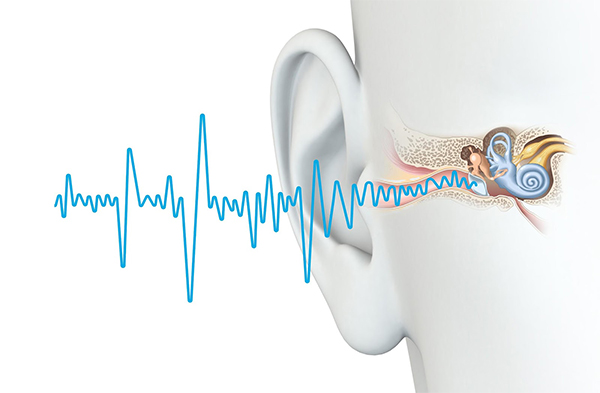When a stone pelted at still water, it creates the ripples from that point in circles. Similarly, a sound source creates waves or pressure variations in the air. In human physiology, a sound is the reception of such sound waves and their perception by the brain.
Our previous session already explained the structure of ears in detail. The ear consists of outer, middle, and inner ear. All the three portions parts are comprising of various parts which helps in processing the sound waves up to the brain. Thus we could hear the sound. This section will more be related to the functioning of the ear and how do we hear the sounds.
How do we hear?
- Sound waves travel into the outer ear i.e. ear canal which is a narrow passageway.
- These sound waves then reach to eardrum which causes them to move. The eardrum vibrates from incoming sound waves and passes the vibrations through the middle ear bones i.e. three tiny bones. These bones are malleus, incus, and stapes.
- These bones in middle ear function together to receive, amplify and transmit the sound from the eardrum to the inner ear. They move back and forth when sounds hit it.
- The cochlea is the part of the inner ear is responsible for the hearing process. It is a snail-like structure consists of hair cells and fluid inside. As soon as the middle ear sends vibrations, the fluid inside the cochlea starts to move. This movement triggers the hair cells.
- The hair cells start to move up and down. Not all cells move at the same time. Different hair cells move for different sound. Hair cells near the wide end of cochlea detect higher-pitched sound whereas the cells present near to narrow end (center) of cochlea detect lower-pitched sounds.
- Stereocilia are the tiny clumps of hair-like projections are arranged in rows by height on the top of hair cells. Sound vibrations cause the stereocilia to bend slightly, which further opens-up pore-like channels. Thus, the mechanical signals of sound converted to an electrical signal.
- The auditory nerve then carries this electrical signal to the brain which interprets as sound and responds accordingly. This is how we hear.
New research on Ion channels
Anthony Ricci, associate professor of otolaryngology, and his coleagues at the University of Wisconsin and the Pellegrin Hospital in France found that the ion channels responsible for hearing.
As we seen, there are Hair cells present deep inside the ear. These hair cells sense vibrations they receive from the three tiny bones. These cells have tiny hair-like projections on their top, called stereocilia.
- These hair-like structures are arranged in rows by height. Sound vibrations cause stereocilia to bend slightly. Scientists have considered the movement opens the small pores, called ion channels. The positively charged ions rush into the hair cell, mechanical vibrations are converted into an electrochemical signal that the brain interprets as sound.
- The results of research claimed that instead of the tallest rows of stereocilia, ion channels are present only on middle and shortest rows.
- To pinpoint the exact location of ion channels, the team squirted rat stereocilia with a tiny water jet. As pressure from the water bent the stereocilia, calcium flooded into the hair cells. The researchers used ultrafast, high-resolution imaging to record exactly where calcium first entered the cells. Each point of entry marked as ion channel.
Hearing sensitivity is different in the morning and night. Ricci quoted an example of watching television during night requires low volume versus morning needs higher volume, considering the morning has more noise
How well the sound waves are captured-and how clearly they are sent to our brains-depends on how well our ear work. Hence, keeping ears healthy is very important and we have to take care of them.
